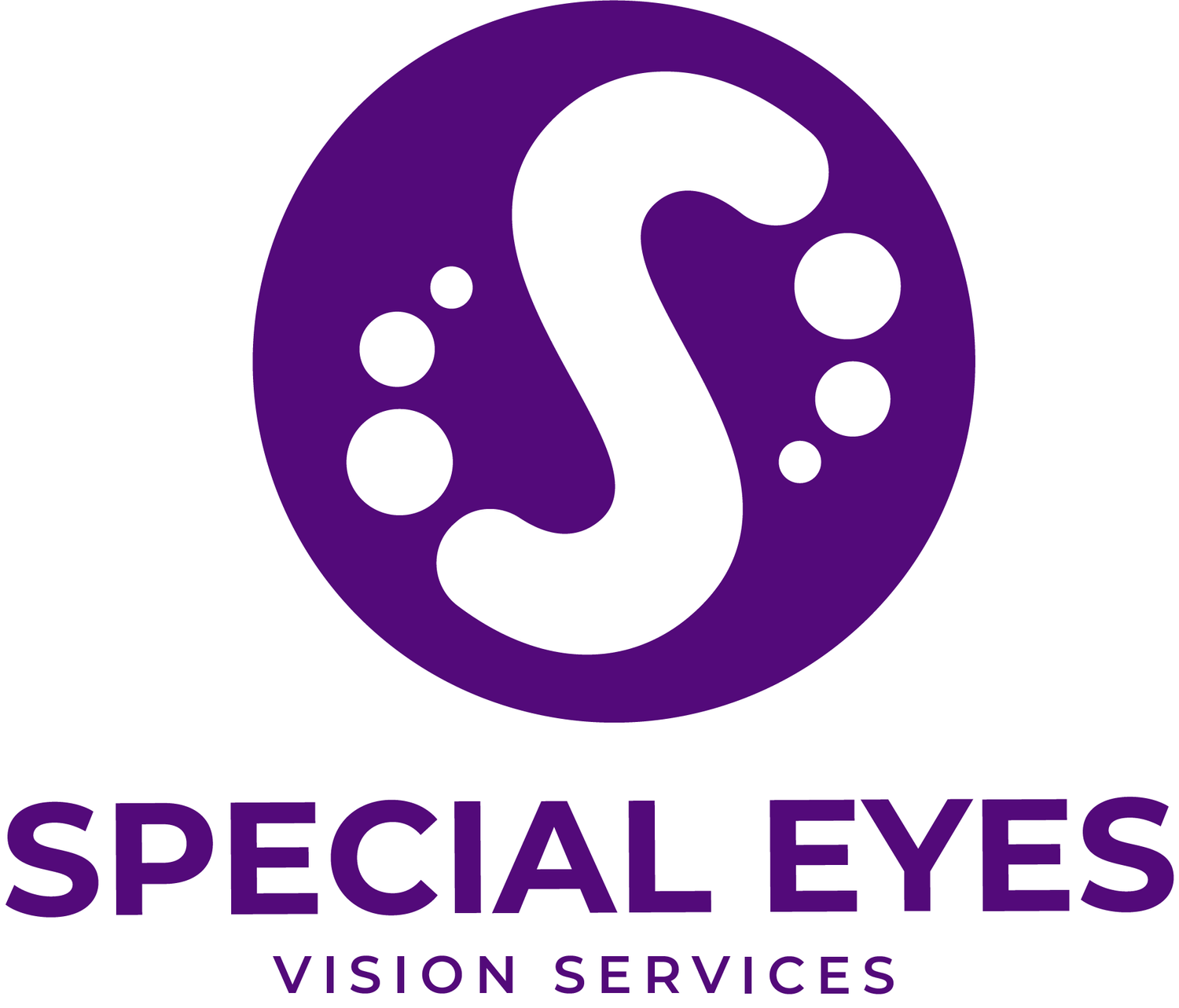Understanding Vision in Down Syndrome: More Than Meets the Eye
Image of a young boy with Down syndrome looking towards the camera and smiling.
When we think about vision problems, we often picture issues with the eyes themselves—needing glasses, cataracts, or conditions like strabismus. However, for children with Down syndrome, vision challenges often go beyond the eyes, involving how the brain processes what they see. In this blog, we’ll explore both the well-documented eye conditions associated with Down syndrome and the less commonly recognized—but equally important—visual processing difficulties linked to cerebral visual impairment (CVI).
Ocular Manifestations in Down Syndrome
Children with Down syndrome are at a higher risk for a range of eye conditions. Studies suggest that up to 70% of individuals with Down syndrome experience some form of ocular abnormality. Some of the most common include:
Strabismus (Eye Misalignment): This can appear as inward (esotropia) or outward (exotropia) turning of the eyes, affecting depth perception and coordination.
Refractive Errors: Many children with Down syndrome have hyperopia (longsightedness), myopia (nearsightedness), and/or astigmatism, making early vision assessments crucial.
Keratoconus: This progressive condition causes the cornea to thin and bulge into a cone shape, leading to distorted vision.
Cataracts: While usually associated with aging, cataracts in Down syndrome can develop early, sometimes from birth, affecting clarity of vision.
Hypo-accommodation: Many children with Down Syndrome struggle with focusing on near objects, making tasks like reading or looking at close-up pictures difficult.
Beyond the Eyes: Cerebral Visual Impairment (CVI) in Down Syndrome
While eye conditions are often diagnosed and managed with glasses or surgery, many children with Down syndrome experience difficulties that stem from the brain rather than the eyes themselves. This is known as Cerebral Visual Impairment (CVI), a condition where the brain has trouble processing visual information. Unlike typical eye conditions, CVI affects how a child interprets what they see, even if their eyesight is technically normal.
Common Signs of CVI in Children with Down Syndrome
Difficulty Navigating Stairs: Many children hesitate or struggle when going down steps, kerbs, or changes in flooring—not due to depth perception issues, but because their brains don’t process the change effectively.
Trouble Finding Objects in Cluttered Spaces: A child may easily spot a toy on an empty table but struggle to find it in a toy box or among other objects.
Overwhelm in Busy Environments: Noisy, visually complex spaces like shopping centers or playgrounds can be disorienting and stressful.
Judging Movement and Speed: Estimating how fast a ball is rolling, how quickly a friend is approaching, or even their own movement can be difficult, leading to clumsiness or defensive behaviors.
Lower Visual Field Deficits: Some children may frequently trip or struggle to notice objects below their eye level.
Why This Matters: Early Recognition and Support
The key to supporting children with Down syndrome and vision challenges is early identification. Regular eye exams are essential, but parents and educators should also be aware of signs of CVI. Because CVI is often mistaken for attention difficulties or behavioral issues, children may not get the support they need. CVI is also not well recognised or understood, despite being the most common cause of visual impairment among children in developed countries. Indeed, CVI frequently goes undetected during a routine eye examination, because the standardised assessments we use during eye examinations are not designed to detect brain-based vision problems. A functional vision assessment with someone who is familiar with CVI is required to properly identify and understand the cerebral component of a child’s vision differences.
Practical Strategies to Help
Declutter Visual Environments: Spacing out toys or using clear organization systems can make it easier for children to find what they need.
Use Predictable Routines: Familiarity reduces visual overload and helps children navigate their surroundings with more confidence.
Provide Verbal Cues: Letting a child know “we’re going up a step now” or “your cup is to the right of your plate” can help bridge visual gaps.
Encourage Contrast and Clarity: High-contrast objects and plain backgrounds can make it easier for children to recognize what they’re looking for.
Getting around: Allowing a child to hold onto your elbow or clothing while moving around, particularly in unfamiliar environments and using lifts rather than stairs where available can help.
Final Thoughts
Understanding the vision challenges faced by individuals with Down syndrome means looking beyond just the eyes. By recognising and identifying both ocular conditions and CVI, we can make adjustments to ensure environments are accessible, supportive, and empowering for these children. Whether through early interventions, environmental adaptations, or simply greater awareness, every small change can make a big difference in how they see—and experience—the world.
Special Eyes Vision Service offers comprehensive functional vision assessments to identify and advise on individualised support for children with suspected CVI.
If you are interested in learning more, please visit our website: www.specialeyesvision.com.au, drop us an email: reception@specialeyesvision.com.au, or call: 07 3544 6167

